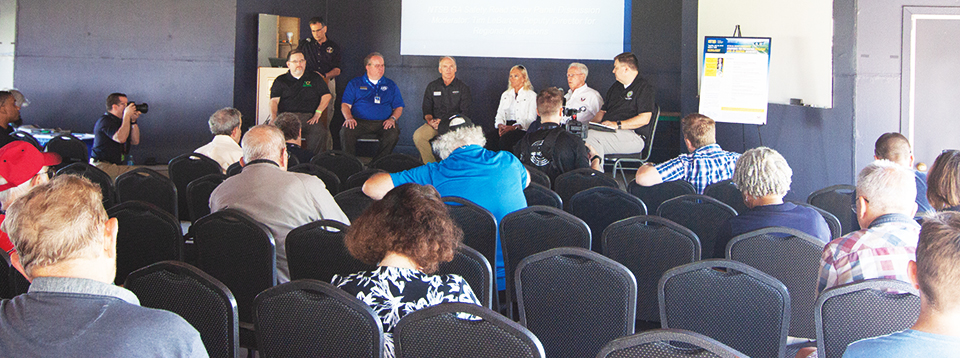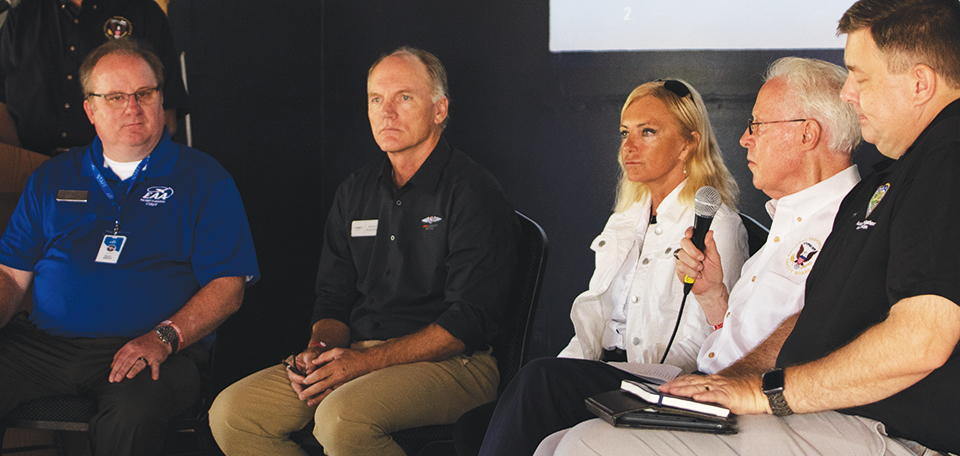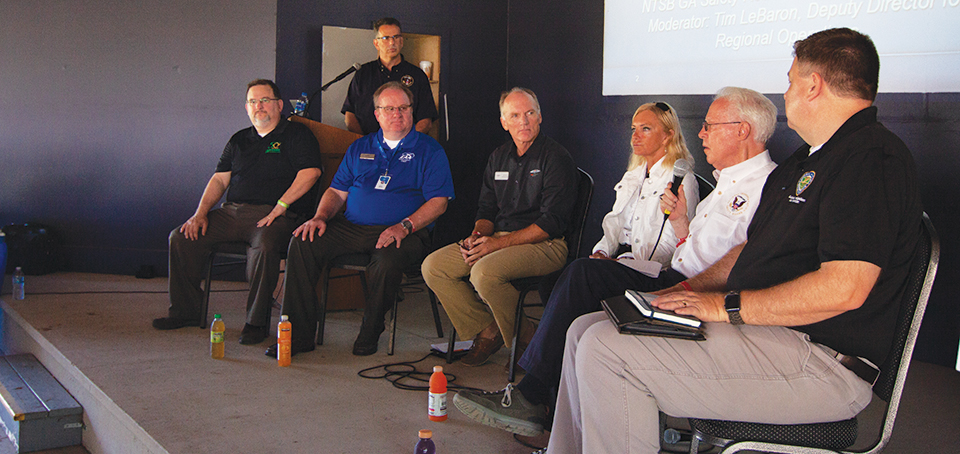NTSB Tackles LOC at Historic Forum
Safety experts address aviation’s most persistent safety problem
by James Wynbrandt
July 24, 2018 - The NTSB brought its General Aviation Safety Road Show to EAA AirVenture Oshkosh 2018 on Tuesday, hosting a forum on loss of control (LOC) in flight, an unwanted fixture on the agency’s most wanted list of safety improvements. “Almost half of the fatalities (in aviation) are due to loss of control,” NTSB Chairman Robert Sumwalt said in welcoming attendees to the forum. “That’s why we’re having the first ever road show right here at Oshkosh.”
Bringing together more than half a dozen safety experts, the forum addressed technologies, training, education, and other potential solutions to the LOC epidemic.
“People are always quick to blame the pilot in every crash, but I think [LOC] is a training system error,” aerobatic superstar Patty Wagstaff said in the keynote address. She cited endemic lack of stick and rudder and upset recovery training as accident factors. “The good news is, we don’t need more regulations, we don’t need a lot of acronyms, or a degree in theoretical physics” to fix the problem, she said, but simply better initial and recurrency training.
A panel discussion moderated by Tim LeBaron, NTSB deputy director for regional operations, highlighted current efforts and evolving solutions to reducing LOC accidents. Sean Elliott, EAA’s vice president of advocacy and safety, cited the benefits of the “culture of safe operations” the association fosters through its chapters and their activities as helping mitigate LOC.
NTSB board member Earl Weener underscored the work being done at the General Aviation Joint Steering (GAJSC) Committee, a public-private partnership, to combat LOC. This includes promoting safety-enhancing technologies like angle of attack (AOA) indicators, and policy and regulatory changes that hasten their installation in GA cockpits.
Richard McSpadden, executive director of AOPA Air Safety Institute, and the FAA’s Corey Stevens pointed to the online training aids that address LOC, which their organizations provide as helpful resources in the battle against LOC.
Jim Higgins of the University of North Dakota noted that all the school’s CFI candidates go through stall-spin training, though it’s not otherwise required by the aviation program.
In follow-on presentations, Mike Folkerts, an NTSB, air safety investigator discussed the role of professionalism in LOC accidents, and Nicholas Webster, a medical officer with the NTSB Office of Research & Engineering highlighted physiological issues contributing to LOC.
However, the consensus of forum participants was that the best answer to preventing LOC accidents is in-cockpit upset recovery training. LeBaron noted that the NTSB is now having all of its accident investigators take such instruction. “We think it’s important to have that kind of training,” LeBaron said.
Aeorbatics and LOC
Wagstaff, who gave the keynote speech at the NTSB’s Loss of Control forum, is performing in her Extra 300S in the afternoon air shows today and Friday. She said that pilots can “learn about angle of attack and energy management,” which are critical in LOC situations, by watching air show routines. Aerobatic pilots put themselves in some very unusual attitudes, yet have no problem recovering. “People realize we’re not out of control,” Wagstaff said. But these maneuvers aren’t necessary for standard upset recovery training. “We’re professionals,” she added. “Don’t try it at home.”



